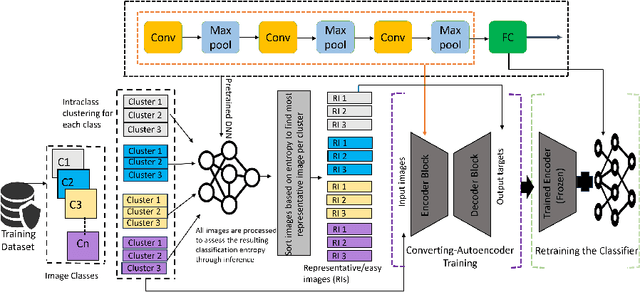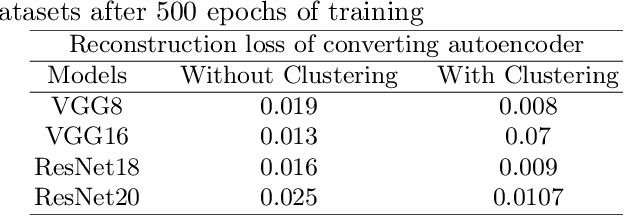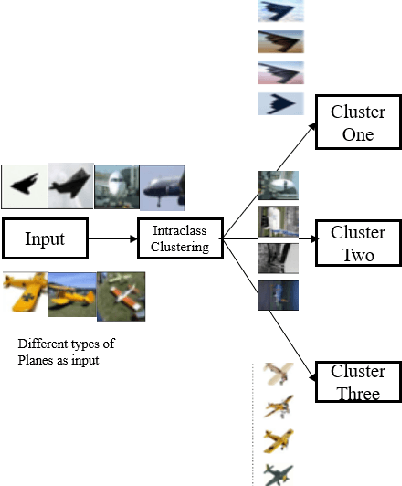Palden Lama
EncodeNet: A Framework for Boosting DNN Accuracy with Entropy-driven Generalized Converting Autoencoder
Apr 21, 2024



Abstract:Image classification is a fundamental task in computer vision, and the quest to enhance DNN accuracy without inflating model size or latency remains a pressing concern. We make a couple of advances in this regard, leading to a novel EncodeNet design and training framework. The first advancement involves Converting Autoencoders, a novel approach that transforms images into an easy-to-classify image of its class. Our prior work that applied the Converting Autoencoder and a simple classifier in tandem achieved moderate accuracy over simple datasets, such as MNIST and FMNIST. However, on more complex datasets like CIFAR-10, the Converting Autoencoder has a large reconstruction loss, making it unsuitable for enhancing DNN accuracy. To address these limitations, we generalize the design of Converting Autoencoders by leveraging a larger class of DNNs, those with architectures comprising feature extraction layers followed by classification layers. We incorporate a generalized algorithmic design of the Converting Autoencoder and intraclass clustering to identify representative images, leading to optimized image feature learning. Next, we demonstrate the effectiveness of our EncodeNet design and training framework, improving the accuracy of well-trained baseline DNNs while maintaining the overall model size. EncodeNet's building blocks comprise the trained encoder from our generalized Converting Autoencoders transferring knowledge to a lightweight classifier network - also extracted from the baseline DNN. Our experimental results demonstrate that EncodeNet improves the accuracy of VGG16 from 92.64% to 94.05% on CIFAR-10 and RestNet20 from 74.56% to 76.04% on CIFAR-100. It outperforms state-of-the-art techniques that rely on knowledge distillation and attention mechanisms, delivering higher accuracy for models of comparable size.
A Converting Autoencoder Toward Low-latency and Energy-efficient DNN Inference at the Edge
Mar 11, 2024Abstract:Reducing inference time and energy usage while maintaining prediction accuracy has become a significant concern for deep neural networks (DNN) inference on resource-constrained edge devices. To address this problem, we propose a novel approach based on "converting" autoencoder and lightweight DNNs. This improves upon recent work such as early-exiting framework and DNN partitioning. Early-exiting frameworks spend different amounts of computation power for different input data depending upon their complexity. However, they can be inefficient in real-world scenarios that deal with many hard image samples. On the other hand, DNN partitioning algorithms that utilize the computation power of both the cloud and edge devices can be affected by network delays and intermittent connections between the cloud and the edge. We present CBNet, a low-latency and energy-efficient DNN inference framework tailored for edge devices. It utilizes a "converting" autoencoder to efficiently transform hard images into easy ones, which are subsequently processed by a lightweight DNN for inference. To the best of our knowledge, such autoencoder has not been proposed earlier. Our experimental results using three popular image-classification datasets on a Raspberry Pi 4, a Google Cloud instance, and an instance with Nvidia Tesla K80 GPU show that CBNet achieves up to 4.8x speedup in inference latency and 79% reduction in energy usage compared to competing techniques while maintaining similar or higher accuracy.
 Add to Chrome
Add to Chrome Add to Firefox
Add to Firefox Add to Edge
Add to Edge